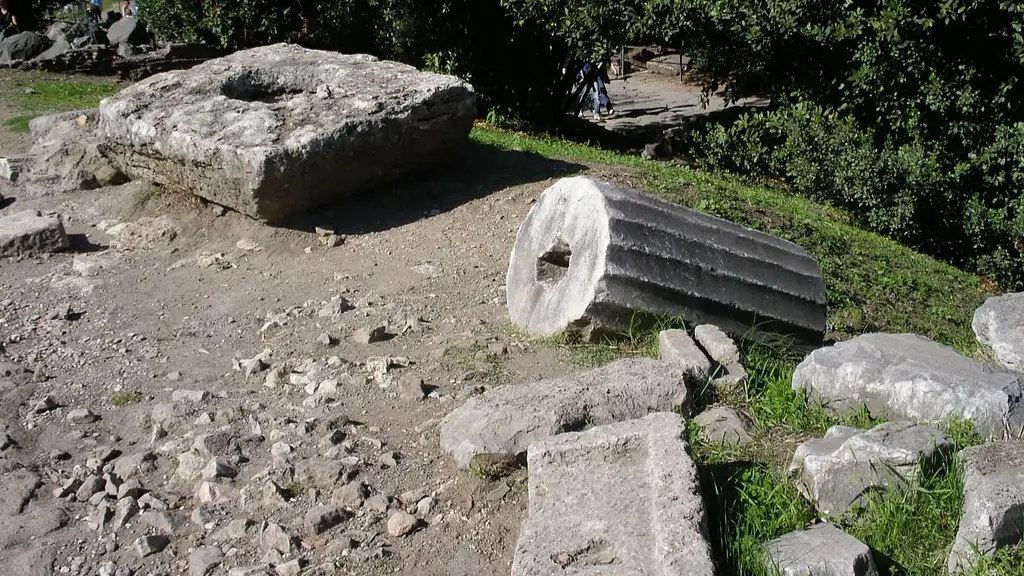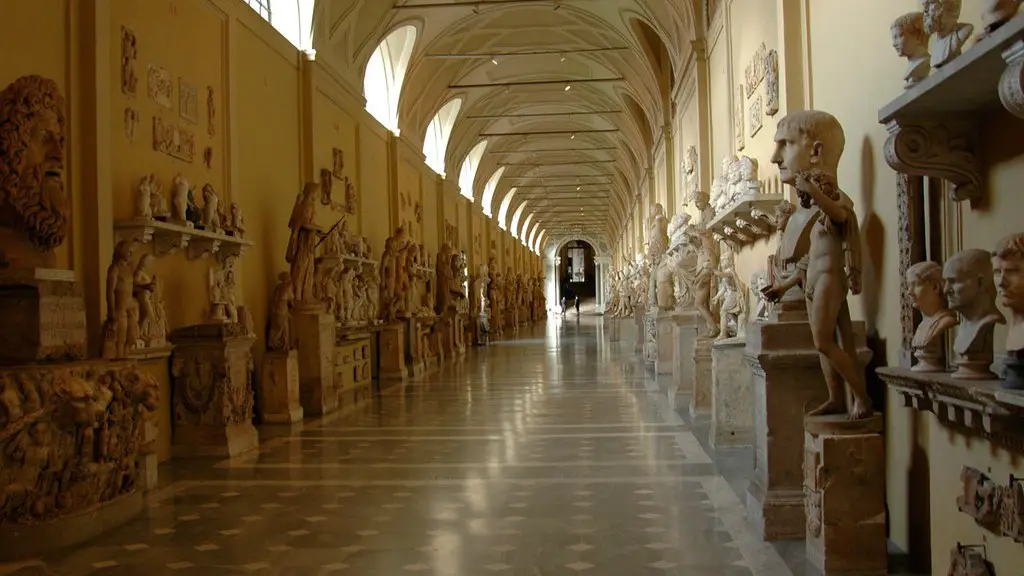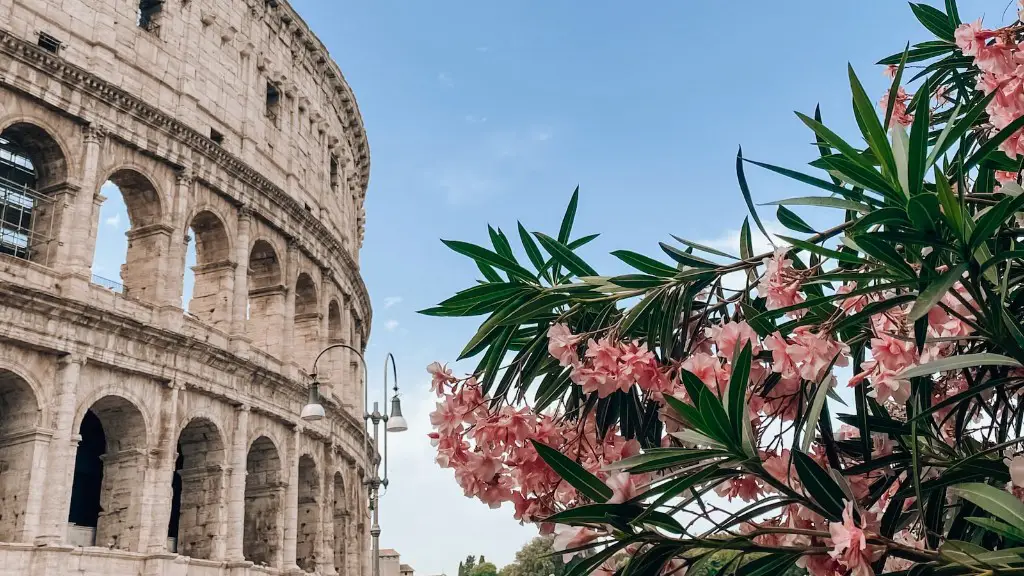Ancient Rome was an influential empire for many different cultures and societies. The food that was eaten by the people of Ancient Rome is still talked about today, and it was typically on the most basic level, with a few luxury items thrown in.
When it came to poultry, Ancient Romans favored chickens and ducks, but occasionally they also enjoyed peacocks, geese, and pheasant. Chickens were seen as an affordable form of protein, while ducks and geese were seen as delicacies consumed by the wealthiest citizens. There is even evidence to suggest that quail, grouse, and pigeons were also consumed, although generally, these were wild-caught.
It is believed that chickens were kept in large pens near many of the villas, which were built during the Roman period. Pigeon coops were sometimes built onto the villas, offering another source of protein for the citizens of Ancient Rome. Ducks and geese were usually farmed, as they could endure the harsher climate and could provide eggs as well as meat.
The chickens, ducks, and geese of Ancient Rome were typically served boiled, roasted, fried, or, sometimes, grilled. As these animals were roasted and boiled, their fats and other juices were used to flavor the various dishes. This was not only more cost-effective, but it also ensured that the meat was tender and flavorful.
When it came to the finer details of preparing these poultry dishes, they would be stuffed with grains such as oats or wheat and possibly with fruits, vegetables, and herbs. This stuffing was often finished with a sauce or a variety of condiments. Ancient Romans used honey and pine nuts to finish their dishes, offering sweetness, crunch, and depth of flavor.
Overall, the citizens of Ancient Rome preferred to consume poultry that was from their own backyard. This was often the most affordable and reliable source of protein, as well as being a great way to use up leftover grains or other seasonal produce. However, the wealthier members of society could afford to enjoy the occasional duck or pheasant as a luxury.
How The Roman Diet Impacts Today’s Cuisine
Ancient Rome had a major influence on today’s culinary culture, particularly with regards to poultry. Many of the cooking techniques used in Ancient Rome are still used today, with modern ingredients often standing in for the meat and grains of the past. Roasting, frying, and boiling are still the most commonly used preparation methods, both on a domestic level and in restaurants globally. This is particularly true of chicken, which is one of the most popular dishes in many countries.
When it comes to stuffing poultry, grains, fruits, and vegetables are still the most popular ingredients to use. These are often combined with seasonings and condiments to create an even more flavorful finished dish. It is believed that the use of honey and pine nuts in Ancient Rome contributed to these ingredients becoming essential flavors in many world cuisines.
The impact of Ancient Rome is evident when looking at the history of many regional dishes, which typically contain a combination of ingredients that would have been available at the time. The Roman Empire spread the use of spices, dried fruits, and grains beyond their own borders, and this influence has been seen throughout history.
In modern times, there have been a massive number of variations and twists to the poultry dishes that were favored by Ancient Romans. Even today, chefs are constantly exploring different techniques, seasonings, and ingredients to create delicious dishes that may have had their roots in Ancient Rome. The influence of this ancient empire can never be underestimated.
Particular Delicacies Popular In Ancient Rome
There are many records of particular delicacies being popular in Ancient Rome, especially when it came to poultry. For example, there is evidence to suggest that roasted guinea fowl was served to the wealthier members of society, being a popular dish for celebrations or dinner parties. These birds were wild caught but were also kept in captivity in larger villas.
Interestingly, it is believed that peacocks were the most beloved poultry of Ancient Rome. They were considered a status symbol and would often be kept as pets or on display in ornamental gardens. The feet and feathers of peacocks were also used for decoration and jewelry, which was seen as a sign of wealth.
Ducks and geese were also considered a delicacy, as they were much more reliable to farm than chickens. Ducks were sometimes stuffed with barley and other grains, while the down of geese was treasured and used in pillows and bedding. Pheasant was also a delicacy and was usually served with a sauce or a granita.
Today, many of these delicacies are still enjoyed, with modern spins and ingredients standing in for the poultry of the past. Additionally, wild game is still hunted in some countries, offering a taste of Ancient Rome. This may involve birds such as wild geese, grouse, and pheasant.
Cooking Techniques Used In Ancient Rome
When it came to cooking poultry in Ancient Rome, the most common techniques were boiling, roasting, and frying. These were done either on a pan or on a spit, although roasting was the most popular preparation method as it was relatively quick and simple to do. This was usually done over an open flame, with the heat coming from firewood or charcoal.
In terms of sauces and condiments, Ancient Romans would use fish sauce and olive oil to finish their dishes. Honey was also used, especially to glaze poultry. This was believed to give a golden color and crunchy flavor to the meat.
In addition to these cooking techniques, Ancient Romans also experimented with baking poultry. This would often involve first boiling the bird before wrapping it in dough and baking it in an earthenware oven. This created an unusual texture of juicy, tender meat with a crispy exterior, which is still enjoyed today.
In terms of seasoning, Ancient Romans would use herbs, peppers, and other spices to add plenty of flavor to their dishes. These would be carefully balanced with the right amounts of oil and fish sauce, to ensure the perfect finished dish. This dedication to creating flavorful dishes is still appreciated by many chefs today.
The Benefits Of Eating Poultry In Ancient Rome
Poultry was a popular source of nutrition in Ancient Rome, due to its affordability and availability. As it was easily accessible, it made sense that it was the most commonly consumed type of meat. Additionally, poultry was seen as a delicacy and was enjoyed by the wealthiest of citizens.
Eating poultry also offered a number of health benefits, as it was a good source of protein and vitamins. This was particularly true of chickens, ducks, and geese, which were higher in essential fatty acids and minerals. It is thought that these animals were often served with plenty of vegetables and grains, to offer a balanced and nutritious diet.
The Romans were also aware that poultry had a shorter cooking time in comparison to other types of meat. This meant that people were able to cook poultry quickly and easily, ensuring that it was cooked thoroughly and did not spoil easily. This knowledge made poultry even more of a staple food in Ancient Rome.
The Preservation Of Poultry In Ancient Rome
In Ancient Rome, the preservation of poultry was taken very seriously, with techniques such as salting, smoking, and pickling being used. This was particularly necessary in the colder months, as fresh poultry was harder to come by. While most of the fresh poultry was consumed cooked, it was believed that some of it was also preserved and eaten cold.
In addition to salting, Ancient Romans also experimented with glazing poultry in honey, which was thought to help preserve the meat and keep it from spoiling. This was also thought to give a unique flavor to the meat, making it even more appealing. It is believed that this is one of the origins of sweet and sour flavor combinations.
The use of brining was also popular in Ancient Rome, allowing poultry to stay edible for longer. This was done either in a vinegar and water solution or with salt and spices. This brining helped to keep the meat moist, as well as making it easier to preserve.
The preservation of poultry in Ancient Rome was essential, not only to keep the food from spoiling but to ensure that it was available throughout the year, no matter the season. This knowledge is still utilised today, with the various techniques ensuring that poultry remains fresh and edible for longer.
Conclusion On The Eating Habits Of Ancient Rome
The eating habits of Ancient Rome have had a major influence on modern cuisine, especially when it comes to poultry. Chickens, ducks, and geese were the main sources of protein, being affordably and widely available. These animals were either farmed or wild-caught, with preparation techniques such as boiling, roasting, and frying being the most popular.
Ancient Romans also experimented with a variety of stuffing and seasonings, as well as glazing their poultry with honey and other ingredients. These practices are still seen today, with modern chefs often embracing the flavors and techniques of Ancient Rome. The impact of this ancient empire on today’s cuisine cannot be underestimated.





